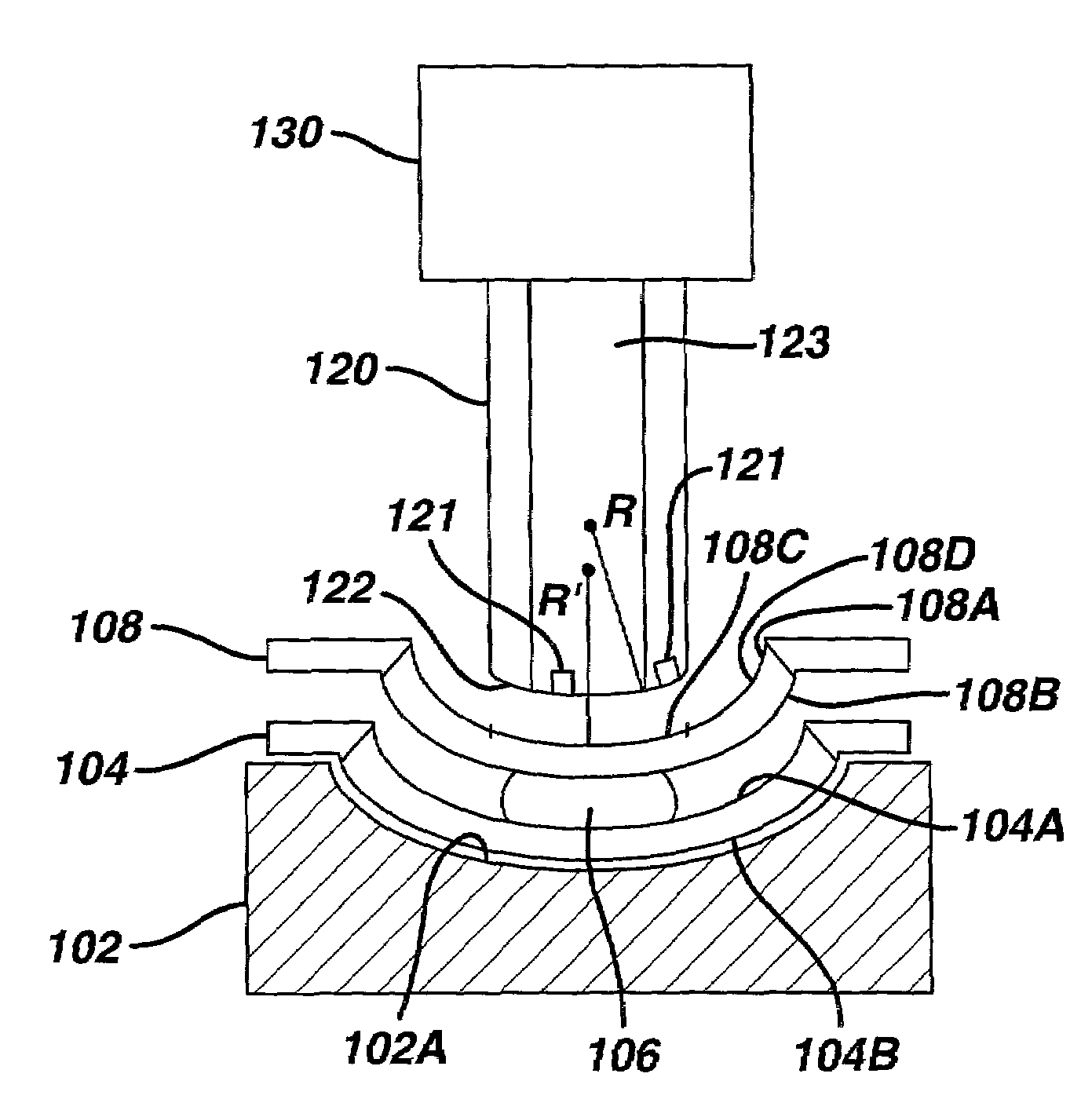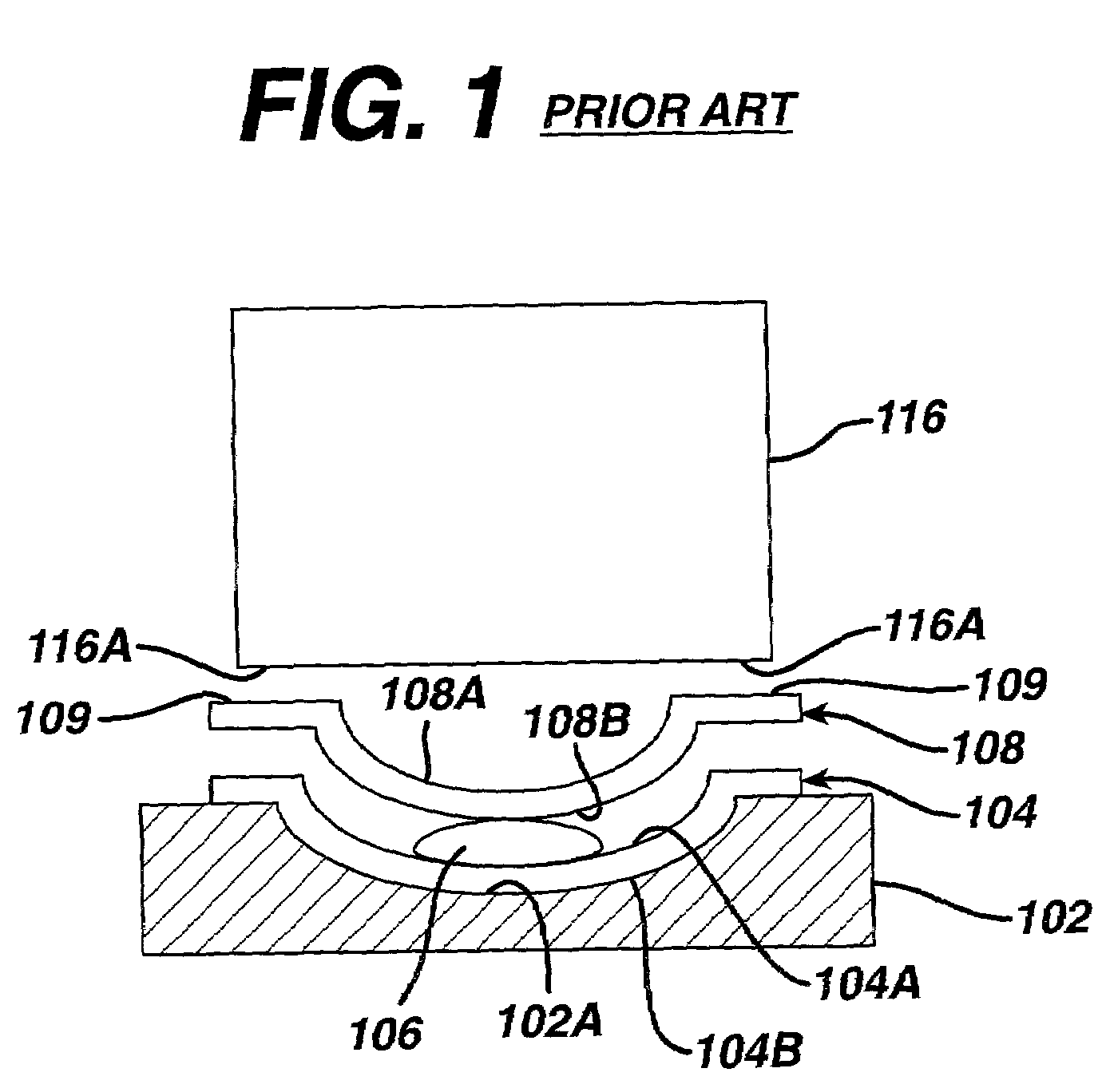Center touch method and apparatus for forming contact lenses
a touch-based, contact lens technology, applied in the field of contact lenses, can solve the problems of reducing production yields and driving up costs, discomfort to wearers, and/or not accurately correcting wearers' vision, so as to prevent mis-shaped lenses and adequately correct wearers' vision
- Summary
- Abstract
- Description
- Claims
- Application Information
AI Technical Summary
Benefits of technology
Problems solved by technology
Method used
Image
Examples
Embodiment Construction
[0029]The present invention relates to an engaging method and apparatus for engaging a contact lens mold assembly used to form a contact lens. FIG. 3A depicts an embodiment of a molding apparatus for forming a contact lens in accordance with the present invention. The molding apparatus comprises a contact lens mold assembly (consisting of a front curve mold half 104 and a back curve mold half 108 which define a contact lens forming cavity for forming a contact lens therebetween), a carrier 102, a center touch engaging member 120, and a drive mechanism 130. The front curve mold half 104 is supported by the carrier 102 and the center touch engaging member 120 is configured to engage the back curve mold half 108. A liquid contact lens material 106 positioned between the front curve mold half 104 and the back curve mold half 108 forms a contact lens therebetween during molding. The drive mechanism 130 positions the center touch engaging member 120 and the carrier 102 relative to one ano...
PUM
| Property | Measurement | Unit |
|---|---|---|
| area | aaaaa | aaaaa |
| molding area | aaaaa | aaaaa |
| molding | aaaaa | aaaaa |
Abstract
Description
Claims
Application Information
 Login to View More
Login to View More - R&D
- Intellectual Property
- Life Sciences
- Materials
- Tech Scout
- Unparalleled Data Quality
- Higher Quality Content
- 60% Fewer Hallucinations
Browse by: Latest US Patents, China's latest patents, Technical Efficacy Thesaurus, Application Domain, Technology Topic, Popular Technical Reports.
© 2025 PatSnap. All rights reserved.Legal|Privacy policy|Modern Slavery Act Transparency Statement|Sitemap|About US| Contact US: help@patsnap.com



